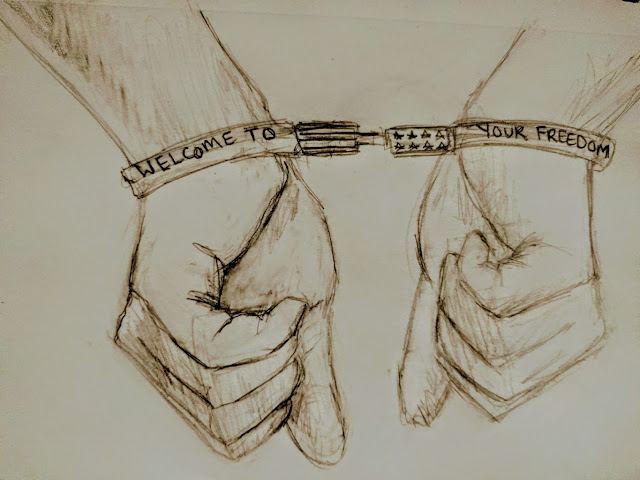Illustration is Storytelling
1) Discuss some of the more compelling ways that Asterios Polyp demonstrates storytelling through illustration.
From the very beginning of Asterios Polyp, the reader can see that there are little words compared to most stories. I could right away tell that instead of reading through words, I would be reading through facial expressions and scenery. As Asterios tries to go and find a job, he comes across a job with Stiff that involves fixing cars. Nowhere does it state that Asterios actually knows nothing about cars. Instead, after he gets the job, we watch him say he's going to get something to eat, and instead walks to the library. From this series of illustrations, we easily come to the conclusion that he is desperate for a job - any job. This theme continues throughout the entire novel. From the way Hana looks at Asterios every time she gets hurt, to the way they turn into different shapes and colors when they argue with each other; all of this tells the reader more than any words could. You can really feel the disconnect between the two in their arguments, and I feel that this is more powerful than words in some cases. As I was reading, I could feel the depression that Asterios carried with him. It was also very clear when we were going into a flashback, for the artwork and mood changed. Another great detail was how each of the characters were drawn. Ursula was a very unique "go with the flow" type of character, and by her easy, simple lines. Each character had their own unique style. Hana was very soft and round, just like her soft personality, whereas Asterios was more bold and sharp, which mirrored his personality as well.
2) Discuss how storytelling may play a part in your own work, whether you're a filmmaker, illustrator, graphic designer, computer animator, or creative writer, etc.
As a game artist, everything I create is part of a story. I create 3D objects for games, including props and environments. When making something for a game as simple as a crate, there are so many details that can change the story behind that object. What if the crate was broken? This poses many questions for the player. Why is it broken? Who broke it? What was inside of it that was worth breaking it open for? These simple details are part of what game artists decide - and it all makes up the bigger picture. Now say the crate was extremely fancy and well guarded, perhaps with a sealed envelope on top of it. Now hundreds of other questions and conclusions about the crate come up. Whoever owns this crate must be wealthy, but who does it belong to? Why is it guarded? To answer these questions we also create the environment in the game. For instance, we could place the crate in a huge castle, or perhaps in a lair of a dragon. All of these details are a part of our jobs as game artists. Even without knowing it, every object we make is creating a story for the player to explore. Even how we make grass tells a story. If the grass is thriving, we know we are in a clean healthy environment. If the grass is dead, the area we are in is most likely in a drought, or some kind of disaster might have come through. Game artists are huge parts of the storytelling of games, whether we know it or not.

Comments
Post a Comment